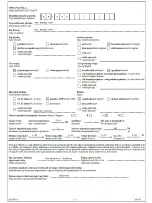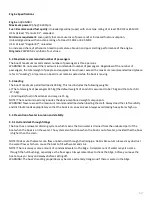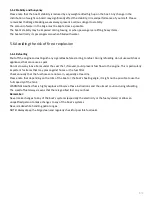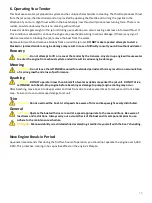
BEFORE YOU SET OFF
Familiarise yourself with this user manual.
Always check at least the following items before leaving:
− Weather conditions and forecast
Take the wind, waves and visibility into account. Are the design category, size and
equipment of your boat, as well as the skills of the skipper and crew adequate for the
waters you are heading for? Hull windows and hatches must be battened down during
heavy wind and rough seas to prevent water incursion.
− Loading and stability
Do not overload the craft, and distribute loads appropriately. Heavy items are to be
placed in the storage compartments underneath the aft bench. Please consider that the
stability of the boat is reduced if people stand up when on board.
− Passengers
Ensure that there are personal flotation devices or lifejackets for all people on board.
Agree on the tasks each person will be responsible for during the voyage before setting
off.
− Fuel and fuel system
Make sure that the boat has enough fuel, including a 20 % reserve for heavy weather or
other unforeseen eventualities.
− Engine and maneuvering equipment
Check the function and condition of steering and the remote control, and carry out the
routine daily checks specified in the engine manual.
− Seaworthiness
Check the boat's seaworthiness in other respects as well: no fuel or water leaks, safety
equipment on board, etc. Check that there is no water in the bilge.
− Fastening of equipment
Check that all onboard items are positioned so that they are held in place also during
rough seas and high winds. Please note that the seat cushions may fly over board if they
are not fixed properly with press studs.
− Nautical charts
If you are not navigating in completely familiar waters, ensure you have nautical charts
on board that cover a large enough area! If your boat is equipped with a chart plotter,
learn to use it before setting off. Ensure that the plotter charts are of the latest edition.
− Leaving the berth
Agree with the crew who will unfasten which mooring line, etc. Make sure that the
mooring lines will not get entangled with the propeller during maneuvering.
− Obligatory equipment
What is considered obligatory equipment varies from country to country. Find out what
is required for your boat.
You will find additional instructions concerning the engine in the separate engine manual.
4
Содержание JetTENDER 250
Страница 1: ...JetTENDER 250 User Manual 1...
Страница 6: ...6...
Страница 7: ...7...
Страница 8: ...8...
Страница 27: ...27...





































